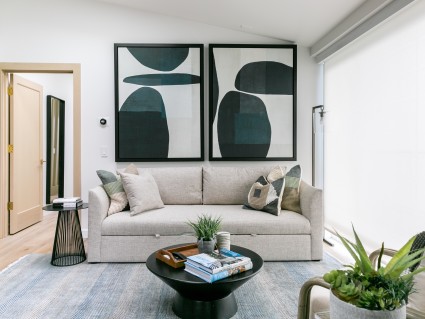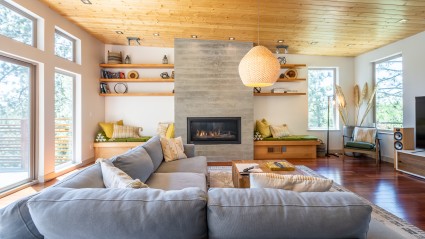Luxury second homes
1. Paint a colorful front door
Your front door is your home’s first impression. A bold, colorful door makes a statement before your guests even cross the threshold. It’s an easy, affordable upgrade that sets the tone for your design aesthetic throughout the rest of the home. As for which color to choose, go with your gut — and be sure to complement your home’s overall exterior paint and trim colors.2. Give every room a focal point
Decide where you want the focal point to be in each room (and no, it doesn’t have to be a TV!). Perhaps it’s a stately fireplace, a feature wall, or the gorgeous view through a floor-to-ceiling window. Whatever it is, arrange your furniture and accessories to highlight the focal point. Consider layouts that encourage conversation, too.
3. Layer your lighting
For function and drama, you should have three kinds of lighting in any room: ambient, like the room-wide light that comes from recessed lights or ceiling fixtures; task lighting, like pendants hanging over a kitchen island or a tabletop lamp in a library; and accent lighting, like wall sconces that light a particular area or object. Using multiple types of lighting gives every room a polished look.
4. Add houseplants
Houseplants instantly make every room feel more welcoming. And even if you don’t have a green thumb, plenty of houseplants are very forgiving. Don’t be afraid to put multiple plants in one space. Tuck small succulents on a bookshelf near large, verdant foliage in floor pots. Bonus: They keep the air clean.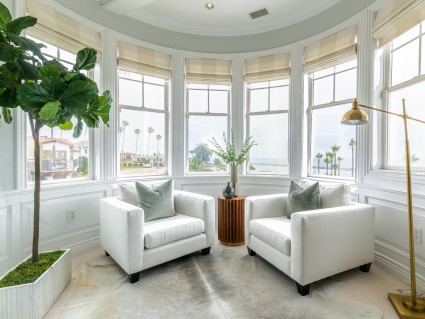
5. Use mirrors strategically
Some designers believe every room should have a mirror, but even if you don’t go that far, decorating with mirrors can be especially useful in small or dark rooms. In cramped spaces, mirrors give the impression of more space. And in shadowy areas, they reflect light perfectly. Here’s one expert tip: Hang mirrors perpendicular to windows, not across the room. That way, you can avoid all that beautiful light going right back out the window.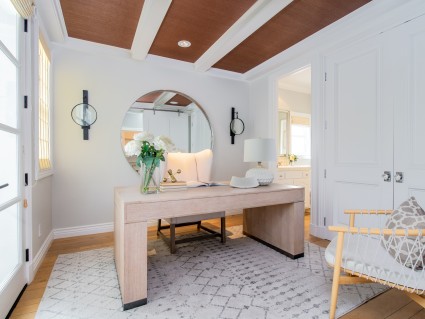
6. Mix and match furniture
It’s convenient to buy a sofa and matching loveseat and matching armchair and matching ottoman, but resist that urge! Mixing and matching furniture pieces adds more visual interest and depth to a room — and keeps it from looking like a furniture showroom. This can be as simple as decorating your dining room with a gorgeous dark wood table, accented by contrasting wood or upholstered dining chairs. In a living room, you might pair a sofa in a neutral color with a leather ottoman and side chairs upholstered in a fun fabric.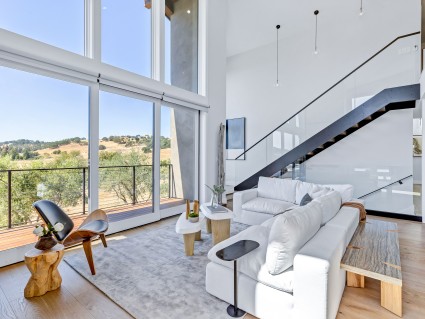
7. Combine different textures
In the same way that you don’t want your furniture to be too matchy-matchy, you want variety in your home’s textiles and accent pieces. Here are a few examples: a tiled fireplace paired with a reclaimed wood mantle, a neutral-color jute rug topped with a colorful (and smaller) wool rug, or a leather couch accented with a plush throw. Mixing metal objects is also on trend.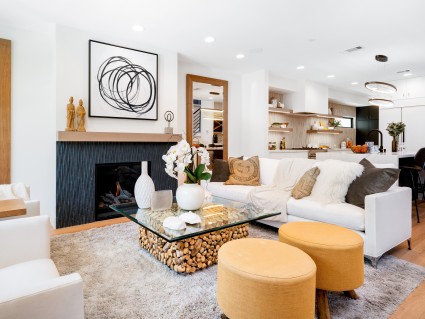
8. Upsize your artwork
One of the most common mistakes people make is choosing artwork that is too small for the wall where it will hang. (Another common misstep is hanging artwork too high — it should always be at eye level.) On a big wall, go with an oversized, framed piece that makes a statement. Or group multiple frames to create a gallery wall. The standard rule of thumb is that artwork should take up two-thirds to three-quarters of the available space on a wall.